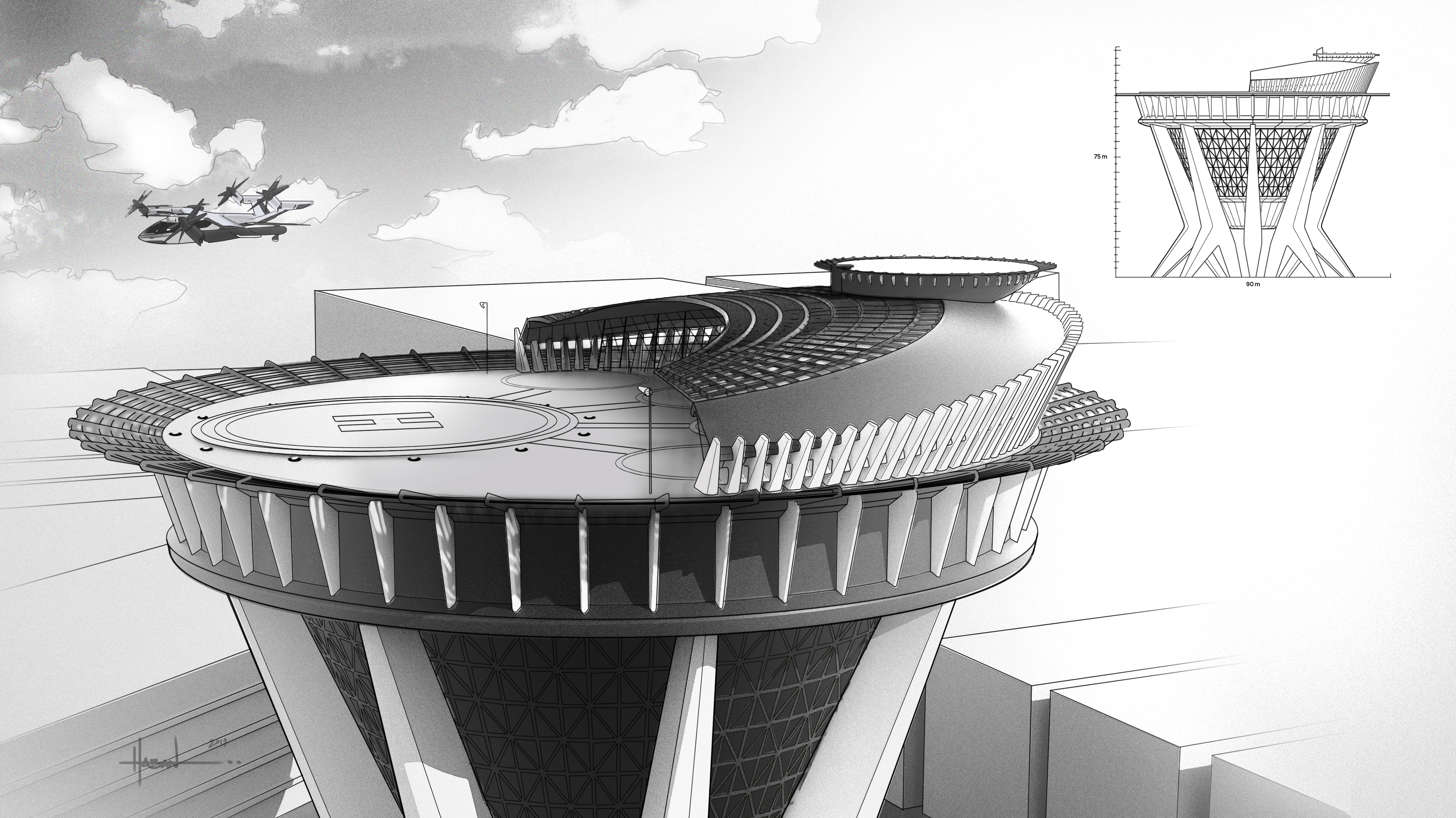Click Here to View This Page on Production Frontend
Click Here to Export Node Content
Click Here to View Printer-Friendly Version (Raw Backend)
Note: front-end display has links to styled print versions.
Content Node ID: 418753
Safety, noise, and economics are among some of the key challenges in developing an infrastructure for urban air mobility (UAM), according to a panel of experts speaking at a session on infrastructure at Invest in Bavaria's Urban Air Mobility 2020: Future of Aerial Transport & Logistics virtual conference earlier this week.
“We have to have trust among users and community,” said panelist Chad Sparks, Bell’s director of strategic campaigns. “It’s incumbent upon us to make sure vehicles are of a safe design.” Sparks suggested that a digital infrastructure would contribute to UAM operational safety by reducing “human causality.”
Feeling safe also means that UAM users are comfortable flying in a vehicle that’s much smaller than a commercial jet, an experience not widely shared among most people, noted panelist Adrienne Lindgren, who handles state and local partnerships for Hyundai Motor Group’s UAM division. “How do we communicate that this is something safe to do?” she said. “A majority of people have not been in small aircraft before. I think a lot of public engagement…has to be a priority.”
To be successful, UAM vehicles and vertiports also will have to produce a minimum of noise. It also affects the routing of UAM. “If the operations aren’t quiet they won’t be allowed,” said panelist and VerdeGo Aero CEO Eric Bartsch. What will be key, panelists said, is not only will the aircraft have to be quiet, but so will the vertiports where they are picking up and dropping off people. That’s where it’s key to have vertiports located “where the noise from these places is in the background,” Bartsch said.
Another big challenge is the cost of operating a UAM system, which is “the one thing that keeps me awake at night more than anything else,” Sparks said. “It is one of the biggest challenges and probably one of the poorest understood aspects of what we’re all trying to do.” The public, Sparks noted, isn’t clamoring for UAM right now, which means early on UAM trips will be expensive and they’ll most likely be used by a limited segment of the population.
“So your first marketing touchpoint is likely going to be business-class travelers, high net-worth individuals, folks that can afford that service,” he explained. “That has to be the stepping-stone towards a broader market acceptance. If the vehicle is sitting parked an inordinate amount of time, the business model falls apart pretty quickly,” Sparks said. So, it’s really going to require demand from the broader public to be sustainable.
For his part, Bartsch thinks that point will be reached. “Even though the aircraft are small, this is more like Southwest Airlines or United Airlines,” he commented. “And what that means is, the aircraft can be expensive as long as they’re utilized at a high rate and they’re efficient to operate. If it’s an expensive aircraft but it’s always moving in the air, it’s always generating revenue, it’s always full, that airplane can be very profitable and it can be priced at a reasonable rate where a lot of people can actually afford to fly in it.”
